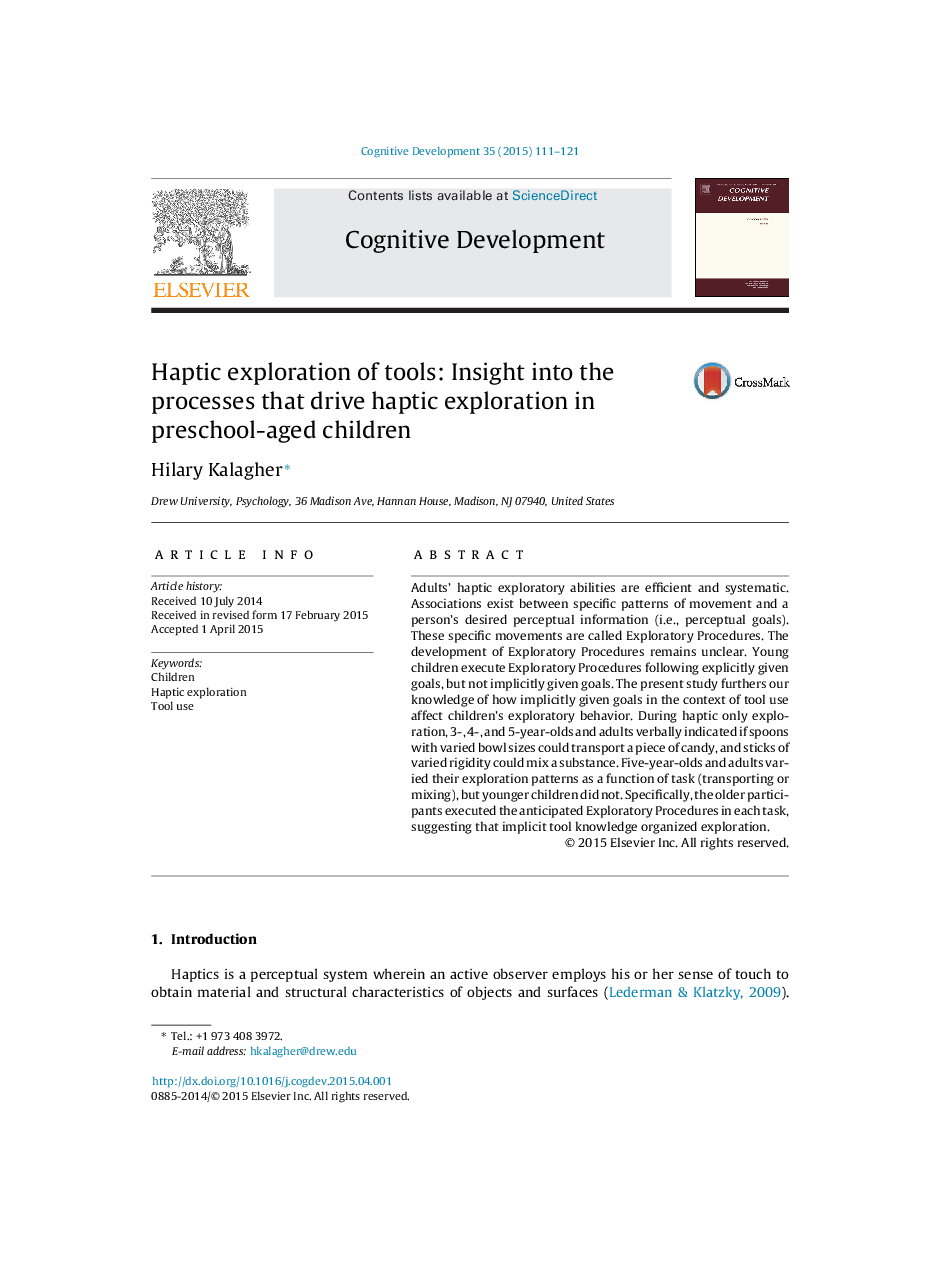| Article ID | Journal | Published Year | Pages | File Type |
|---|---|---|---|---|
| 916445 | Cognitive Development | 2015 | 11 Pages |
Adults’ haptic exploratory abilities are efficient and systematic. Associations exist between specific patterns of movement and a person's desired perceptual information (i.e., perceptual goals). These specific movements are called Exploratory Procedures. The development of Exploratory Procedures remains unclear. Young children execute Exploratory Procedures following explicitly given goals, but not implicitly given goals. The present study furthers our knowledge of how implicitly given goals in the context of tool use affect children's exploratory behavior. During haptic only exploration, 3-, 4-, and 5-year-olds and adults verbally indicated if spoons with varied bowl sizes could transport a piece of candy, and sticks of varied rigidity could mix a substance. Five-year-olds and adults varied their exploration patterns as a function of task (transporting or mixing), but younger children did not. Specifically, the older participants executed the anticipated Exploratory Procedures in each task, suggesting that implicit tool knowledge organized exploration.
